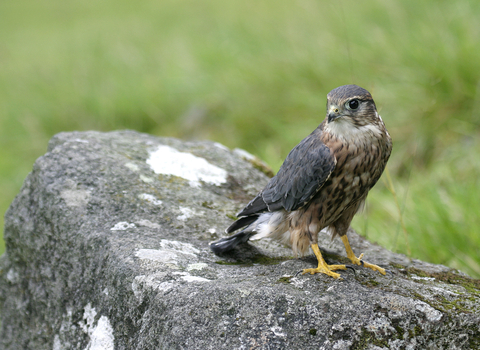
©Wildstock
Merlin
Our most diminutive falcon, the merlin is a pretty bird of prey. It chases small birds, flying low to the ground or hovering in the breeze because of its small size. Resident merlins are joined in winter by Icelandic migrants.
Scientific name
Falco columbariusWhen to see
January to DecemberSpecies information
Category
Statistics
Length: 26-31cmWingspan: 56cm
Weight: 180-230g
Average lifespan: 3 years
Classified in the UK as Red under the Birds of Conservation Concern 5: the Red List for Birds (2021). Protected in the UK under the Wildlife and Countryside Act, 1981.
